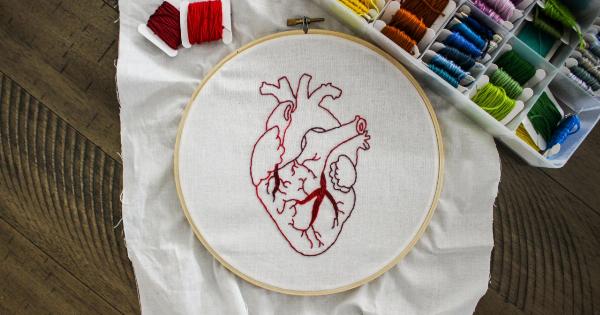Diabetes management is a daily challenge for millions of people around the world. From monitoring blood sugar levels to administering insulin injections, it requires careful attention and adherence to a strict routine.
However, a ground-breaking invention known as the insulin patch is poised to revolutionize diabetes treatment. This innovative technology offers a painless and convenient alternative to traditional insulin delivery methods, promising exciting changes for those living with this chronic condition.
The Current Paradigm: Challenges in Diabetes Treatment
Diabetes, a metabolic disorder characterized by high blood sugar levels, affects individuals of all ages, posing significant health risks if not adequately managed.
The most common type, type 2 diabetes, often develops as a result of lifestyle factors such as poor diet, sedentary behavior, and obesity. On the other hand, type 1 diabetes is an autoimmune disease that typically manifests in childhood or adolescence.
For decades, insulin injections have been the primary method of delivering the hormone that regulates blood sugar levels in people with diabetes. This approach, however, presents several challenges.
Firstly, repeated injections can be painful and inconvenient, leading to poor compliance and emotional distress. Secondly, the necessity of carrying needles, syringes, and vials of insulin can be burdensome, especially when traveling or participating in physical activities.
Moreover, injections can cause skin irritation, lesions, and infections, further compromising the quality of life for those reliant on insulin therapy.
Fear of needles, known as needle phobia, is also prevalent among individuals, making self-administration a dreaded task. Therefore, the development of an alternative and user-friendly insulin delivery system has been a long-standing goal for medical researchers and clinicians alike.
The Insulin Patch: How Does it Work?
The insulin patch, a technological breakthrough in diabetes management, is designed to address the limitations of conventional insulin delivery methods.
This skin-adherent device offers a convenient and needle-free approach for administering insulin to individuals with diabetes.
The patch consists of a small, flexible, and discreet adhesive patch that adheres to the skin’s surface, usually in the form of a bandage or a patch-like structure.
It contains tiny microneedles that painlessly penetrate the skin and release insulin into the underlying tissue layers. These microneedles are constructed from biocompatible materials, ensuring the safety and effectiveness of the patch.
Unlike traditional injections, the insulin patch is designed for continuous insulin delivery, eliminating the need for multiple daily injections.
It can either be worn for a specific duration, typically ranging from a few hours to several days, or replaced daily, depending on the type of patch and individual requirements. The patch is connected to a small reservoir filled with insulin, ensuring a constant and regulated flow of the hormone.
Furthermore, the insulin patch incorporates cutting-edge microtechnology, enabling it to automatically adjust the insulin dose based on the wearer’s blood sugar levels.
This feature revolutionizes diabetes management, as it mimics the natural function of a healthy pancreas, which releases insulin in response to glucose fluctuations.
The Advantages of the Insulin Patch
The emergence of the insulin patch represents a monumental advancement in the field of diabetes treatment.
Its benefits are vast and far-reaching, promising to enhance the quality of life for individuals grappling with the complexities of managing their blood sugar levels.
No More Needles, No More Pain
One of the most significant advantages of the insulin patch is the elimination of needles and the pain associated with injections.
The microneedles are so small that they do not stimulate the pain receptors present in the skin, resulting in a painless insulin delivery experience. This feature is particularly beneficial for individuals with needle phobias or children with diabetes, reducing anxiety and resistance toward insulin therapy.
Enhanced Convenience and Improved Compliance
The insulin patch offers exceptional convenience, making diabetes management less invasive and more seamless.
Rather than carrying around syringes, vials, and other equipment, individuals can simply apply the patch onto their skin and continue with their daily activities. It empowers people with diabetes to engage in physical exercises, travels, and various social activities without the burden of constant insulin administration.
Moreover, the patch’s continuous delivery system eliminates the need for frequent injections, thereby enhancing compliance and treatment adherence.
By removing the barriers associated with traditional insulin therapies, individuals are more likely to follow their prescribed treatment regimen consistently, leading to improved glycemic control and overall health outcomes.
Improved Safety Profile
The insulin patch boasts an impressive safety profile, significantly reducing the risk of infections, skin reactions, and other complications associated with traditional insulin injections.
The microneedles are designed to cause minimal trauma to the skin, reducing the likelihood of lesions, bruises, or irritations. Additionally, the closed reservoir system of the patch prevents contamination and maintains the sterility of the insulin, minimizing the risk of infections.
Smart Technology for Optimal Insulin Delivery
What sets the insulin patch apart is its integration of smart technology, which ensures optimal insulin dosing based on real-time blood sugar levels.
This personalized approach to insulin delivery allows for precise management of glucose control, reducing the risk of hypoglycemia and hyperglycemia episodes. The patch continuously monitors blood sugar levels using small sensors embedded within its structure, delivering insulin as needed to maintain stable glycemic levels.
This intelligent and proactive system helps individuals achieve better glycemic control throughout the day, reducing the long-term complications associated with diabetes, such as neuropathy, retinopathy, and cardiovascular diseases.
Current Development and Future Prospects
Though still in its developmental phase, the insulin patch holds immense promise for the future of diabetes treatment.
Ongoing research and clinical trials are focused on refining its design, improving adherence, and optimizing glucose-sensing technology.
Researchers are also investigating methods of incorporating additional functionalities into the insulin patch.
For instance, future iterations may integrate continuous glucose monitoring (CGM) capabilities, allowing individuals to monitor their blood sugar levels without the need for separate devices. This integrated approach would streamline diabetes management, providing a holistic solution for monitoring, insulin delivery, and data analysis.
Furthermore, advancements in wearable technologies and remote monitoring systems may enable healthcare professionals to remotely access and analyze data from insulin patches worn by their patients.
This connectivity can offer real-time insights into glycemic control, allowing for prompt adjustments in treatment plans, and offering personalized interventions based on individuals’ unique needs.
A Paradigm Shift in Diabetes Treatment
The emergence of the insulin patch heralds a paradigm shift in the management of diabetes.
This ground-breaking technology addresses the limitations and challenges of traditional insulin delivery methods, offering a painless, convenient, and user-friendly alternative.
By eliminating the need for needles, enhancing convenience, improving compliance, and incorporating smart technology, the insulin patch promises to revolutionize diabetes treatment.
It has the potential to empower individuals with diabetes, enabling them to lead fulfilling lives while effectively managing their blood sugar levels.
As the development of the insulin patch continues and more research is conducted, it holds the exciting prospect of transforming healthcare for millions of people living with diabetes worldwide.































